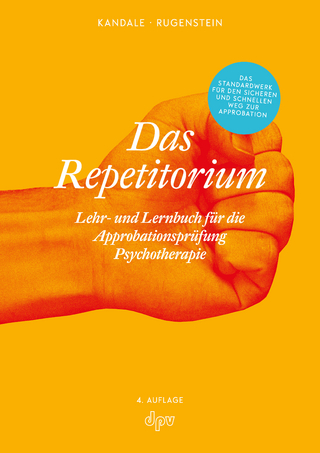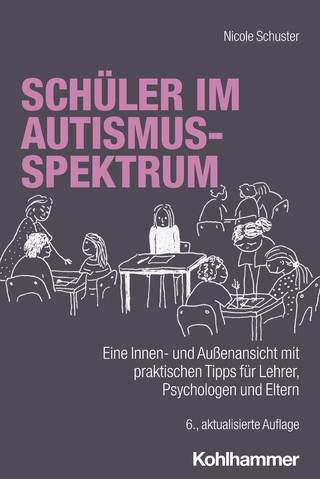
No Bullshit Therapy
Routledge (Verlag)
978-1-032-40839-2 (ISBN)
Do you have clients who do not want to be helped? Clients who don’t trust you, your profession, or your service? Clients who don’t want to change despite your best efforts?
Then No Bullshit Therapy (NBT) is for you! Most simply, NBT is about being authentic.
Many people are cajoled, pressured, or mandated to see therapists, counsellors, and other helpers. Hence, they are reluctant, suspicious, and resistant to being helped. This puts professionals in the difficult position of trying to help someone who does not want to be helped. To make things worse, there are few practice models designed to engage people who don’t want to be engaged.
NBT creates a context for mutual honesty and directness in working relationships. Creating a context for mutual honesty and directness can be refreshingly effective, especially with people who are suspicious of counselling or distrustful of the counsellor. When combined with warmth and care, honesty and directness can enhance co-operation, connection, and trust, especially if the practitioner avoids jargon and acknowledges constraints to the work. NBT is ideal for working with people who:
Don’t like therapy or the idea of therapy (even if they’ve never had it)
Don’t trust warm fuzzy “do-gooders” or “psychologisers”
Are suspicious of services because they have experienced trauma and have had abusive institutional experiences or unsatisfactory treatment in the past
Don’t see themselves as a client, don’t agree with the referrer’s description of them or their problems, and appear to not want to change
Practical and engaging, this book is an essential guide for therapists, counsellors, and other allied-health professionals who are looking for a more effective way to connect with reluctant clients and ensure they get the support they need. It may also help you create more robust relationships at work and at home.
Jeff Young, PhD, is Emeritus Professor of Family Therapy and Systemic Practice at La Trobe University, Melbourne, Australia. He was Director of The Bouverie Centre, the world’s largest family therapy agency (2009–2022). His awards include the ANZJFT Special Award for Distinguished Contributions to Family Therapy (2017) and the THEMHS Exceptional Contributions to Mental Health (2022).
Chapter 1: Introduction to No Bullshit Therapy 1.1 No Bullshit Therapy Clinical Guidelines: At a glance 1.2 Aim of this book 1.3 Notes on language 1.4 Notes on clinical examples 1.5 How this book is organised 1.6 References Chapter 2: The Theory of Bullshit 2.1 Bullshit: History and definitions 2.2 Loss of faith in political leaders in the world of spin, fake news, and post-truth 2.3 The loss of faith in health professionals 2.4 References Chapter 3: The Development of No Bullshit Therapy 3.1 References Chapter 4: Therapy-Lovers and Therapy-Haters 4.1 Other models designed to engage therapy-haters 4.2 Engagement: How is it different with therapy-haters? 4.3 References Chapter 5: NBT Clinical Guidelines and Practice Notes for Working with Therapy-Haters 5.1 Creating a context to promote mutual honesty and directness 1. Establish a mandate: How to work, what to work on 2. Marry honesty and directness with warmth and care 3. Be upfront about constraints 4. Avoid jargon 5.2 References Chapter 6: NBT Clinical Guidelines: Practice Notes for Working with Therapy-Lovers 6.1 Creating a context to promote mutual honesty and directness with therapy-lovers 1. Establishing a mandate when working with therapy-lovers 2. Marrying honesty and directness with warmth and care when working with therapy-lovers 3. Being upfront about constraints when working with therapy-lovers 4. Avoiding jargon when working with therapy-lovers References Chapter 7: NBT First Session – with Commentary 7.1 The ideal No Bullshit therapist 7.2 References Chapter 8: NBT Safety Strategies 8.1 References Chapter 9: NBT Tools 9.1 Self-supervision for workers Self-supervision for clients 9.2 The NBT hand for making everyday requests 9.3 References Chapter 10: NBT, Power, and Social Identity 10.1 Power 10.2 Social identity 10.3 References Chapter 11: NBT, Trauma, Blame, and Shame 11.1 NBT session transcript with neuropsychological commentary 11.2 NBT client commentary 11.3 References Chapter 12: NBT with Couples, Families, and at Work 12.1 Couples 12.2 Families 12.3 Work meetings 12.4 Saying the unsayable in the workplace 12.5 References Chapter 13: Concluding Comments 13.1 References
| Erscheinungsdatum | 07.12.2023 |
|---|---|
| Zusatzinfo | 7 Line drawings, black and white; 7 Illustrations, black and white |
| Verlagsort | London |
| Sprache | englisch |
| Maße | 156 x 234 mm |
| Gewicht | 489 g |
| Themenwelt | Sachbuch/Ratgeber ► Gesundheit / Leben / Psychologie |
| Geisteswissenschaften ► Psychologie ► Familien- / Systemische Therapie | |
| Medizin / Pharmazie ► Gesundheitswesen | |
| Medizin / Pharmazie ► Medizinische Fachgebiete ► Psychiatrie / Psychotherapie | |
| Sozialwissenschaften ► Pädagogik ► Sozialpädagogik | |
| Sozialwissenschaften ► Soziologie | |
| ISBN-10 | 1-032-40839-1 / 1032408391 |
| ISBN-13 | 978-1-032-40839-2 / 9781032408392 |
| Zustand | Neuware |
| Haben Sie eine Frage zum Produkt? |
aus dem Bereich


